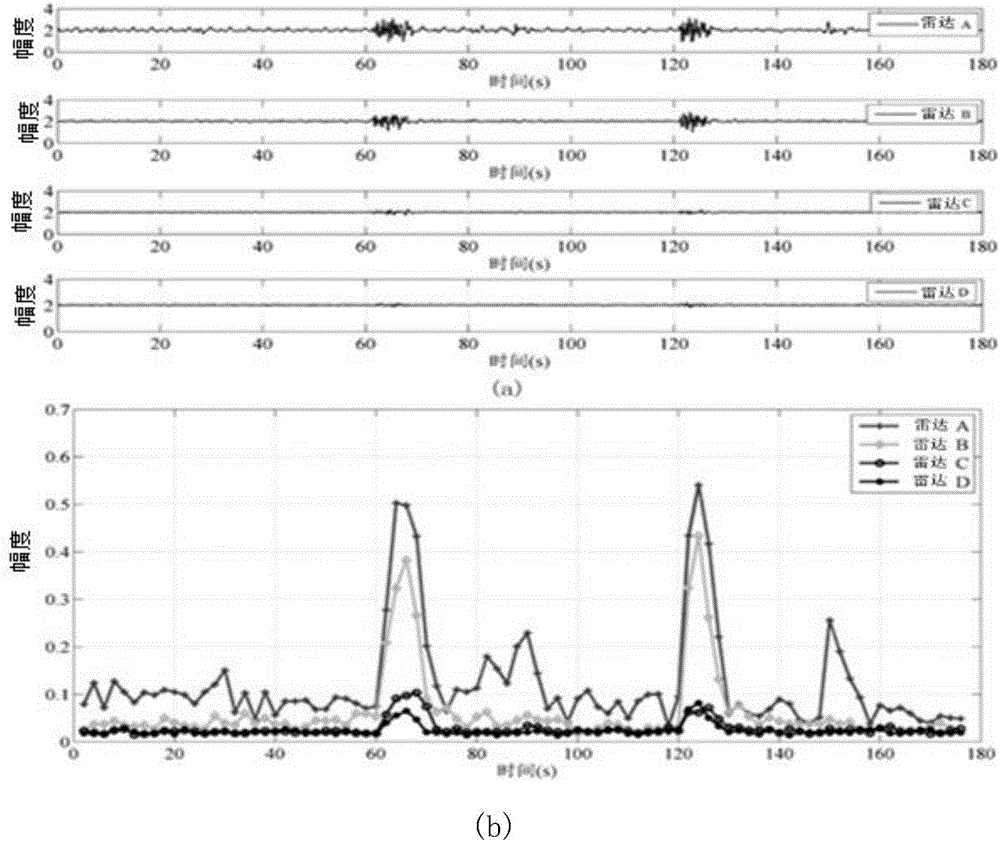Omnidirectional biological radar-based two-dimensional CA-CFAR (cell average-constant false-alarm rate) human body random motion detection method
A CA-CFAR, bio-radar technology, used in electromagnetic wave detection, radio wave measurement systems, instruments, etc.
- Summary
- Abstract
- Description
- Claims
- Application Information
AI Technical Summary
Problems solved by technology
Method used
Image
Examples
Embodiment
[0079] Adopt the method of the present invention, utilize the bioradar detection experiment that human body target random body moves and select K 1 = K 2 =1.7 to evaluate the effectiveness of this method. According to the relative position of the human body and the radar, it is mainly divided into the following three situations:
[0080] Figure 9 is the original signal and its processing result when the abdomen of the human body is facing the direction of the main lobe of radar A. Such as Figure 9 As shown in (a), since the radar A antenna is covered by the human body, the moving target interference is very small, and a clear breathing waveform can be seen. The radar B, C, and D antennas are not covered by the human body, and the moving target interference is very strong. Due to the shaking of the measured object, the Radar A signal changed drastically around 60s and 120s. The random body motion recognition algorithm recognizes body motion around 60s and 120s of the rad...
PUM
 Login to View More
Login to View More Abstract
Description
Claims
Application Information
 Login to View More
Login to View More - R&D
- Intellectual Property
- Life Sciences
- Materials
- Tech Scout
- Unparalleled Data Quality
- Higher Quality Content
- 60% Fewer Hallucinations
Browse by: Latest US Patents, China's latest patents, Technical Efficacy Thesaurus, Application Domain, Technology Topic, Popular Technical Reports.
© 2025 PatSnap. All rights reserved.Legal|Privacy policy|Modern Slavery Act Transparency Statement|Sitemap|About US| Contact US: help@patsnap.com



